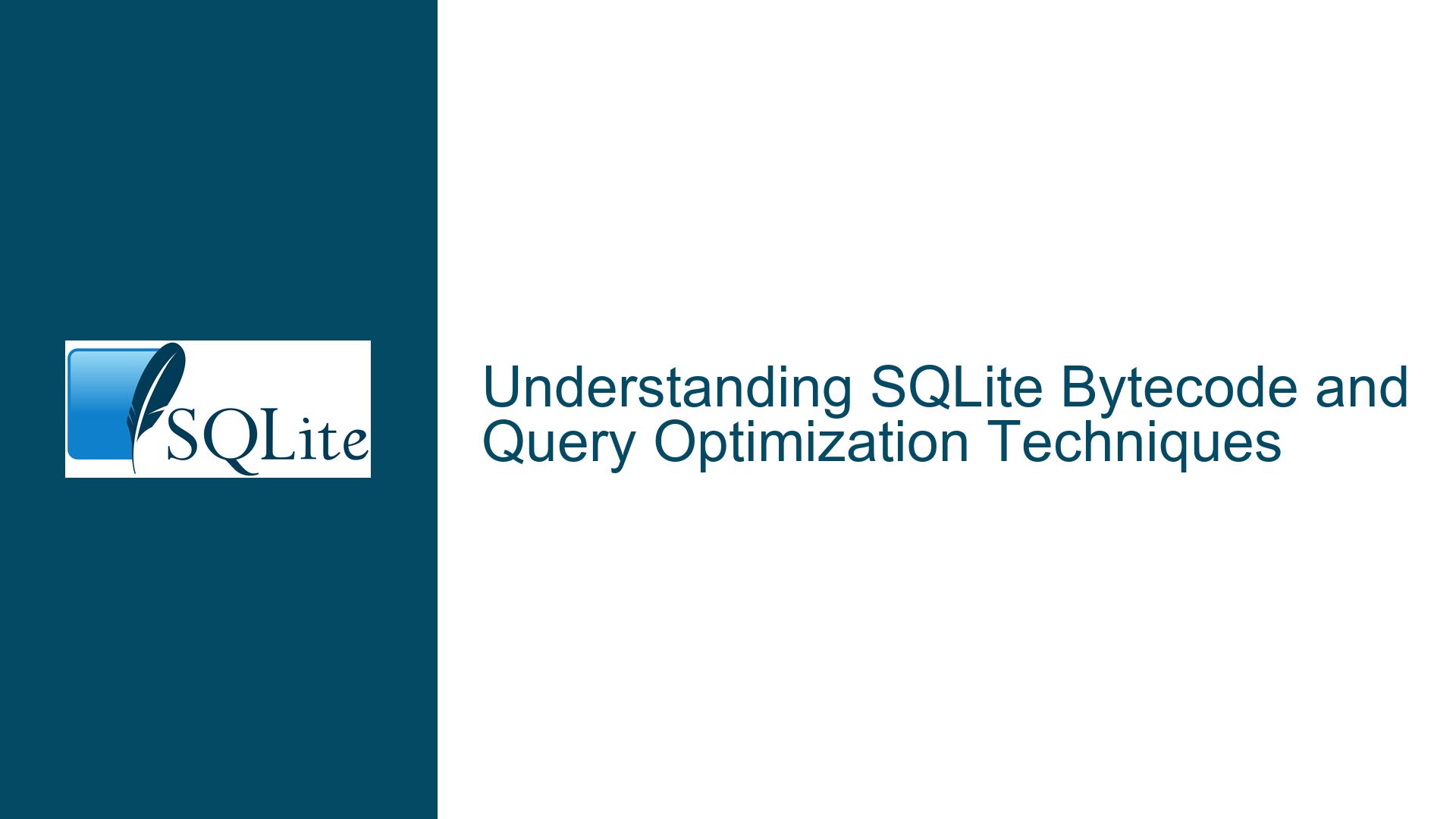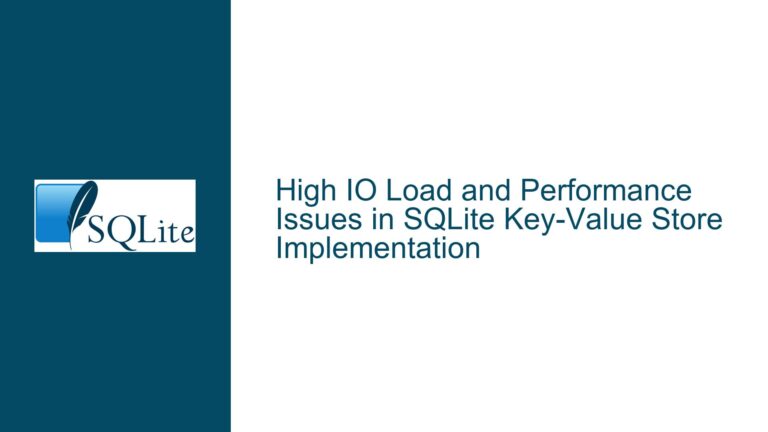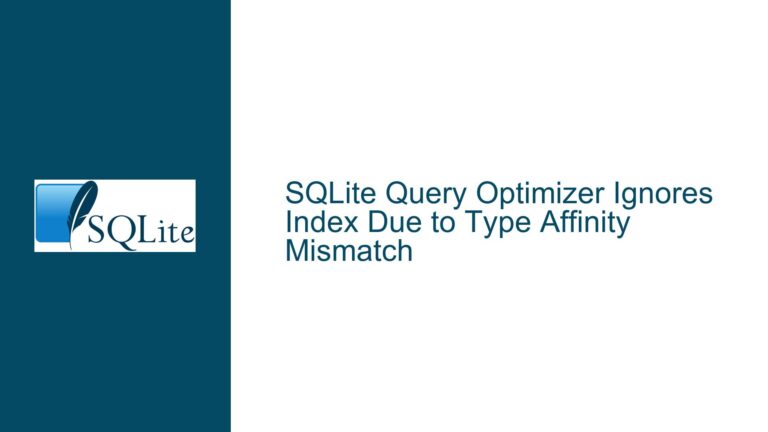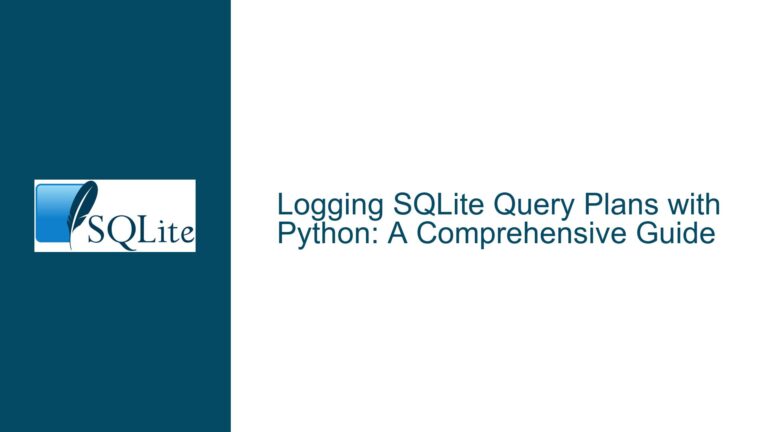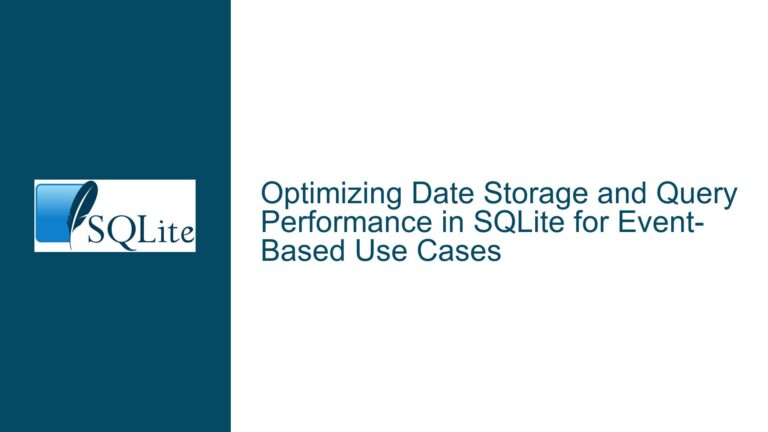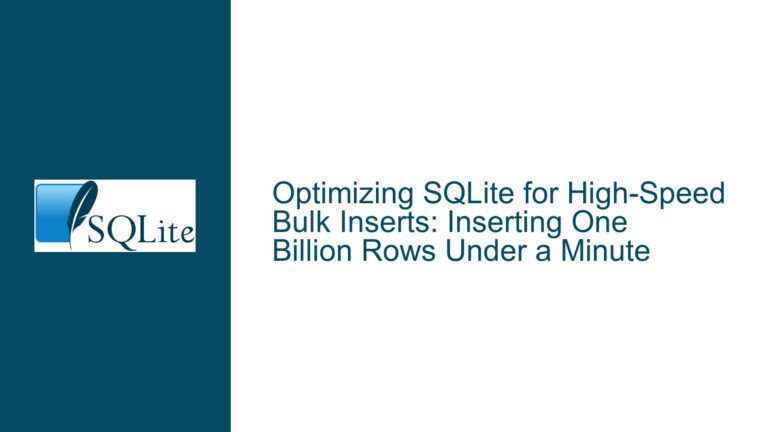SQLite Bytecode and Query Optimization Techniques
Bytecode Generation and Query Optimization in SQLite
SQLite is a lightweight, embedded relational database management system that employs a unique approach to executing SQL queries: it compiles SQL statements into bytecode, which is then executed by a virtual machine. This design choice has significant implications for query optimization, performance, and execution flexibility. In this post, we will explore the relationship between bytecode generation and query optimization in SQLite, discuss the challenges and advantages of this approach, and provide detailed troubleshooting steps for common issues related to bytecode and query execution.
Bytecode vs. Tree-of-Objects: Optimization in SQLite
SQLite’s query execution process begins with parsing the SQL statement into an Abstract Syntax Tree (AST). The AST is a hierarchical representation of the query, capturing its structure and semantics. Most of the query optimization occurs at this stage, where the SQLite optimizer analyzes the AST to determine the most efficient way to execute the query. This includes decisions about index usage, join order, and predicate pushdown, among others.
Once the AST is optimized, SQLite generates bytecode from the optimized AST. Bytecode is a low-level, linear representation of the query that can be efficiently executed by SQLite’s virtual machine. The bytecode generation process is largely deterministic, meaning that the same optimized AST will always produce the same bytecode. However, there are rare cases where the bytecode itself may be modified after generation, such as in the block of code referenced in the discussion (lines 7073-7188 in the SQLite source code). These modifications are typically minor adjustments to improve performance or handle edge cases.
The choice of bytecode over a tree-of-objects approach has several advantages. Bytecode is more compact and easier to serialize, making it suitable for SQLite’s lightweight design. It also allows for efficient execution, as the virtual machine can quickly interpret and execute the bytecode instructions. However, this approach also presents challenges, particularly in terms of debugging and optimization. Since most optimizations occur before bytecode generation, there is limited opportunity to optimize the bytecode itself. This contrasts with some programming language compilers, which may perform optimizations on both the AST and the generated bytecode or machine code.
Challenges in Bytecode-Based Query Execution
One of the key challenges in SQLite’s bytecode-based query execution is the difficulty of modifying the bytecode after it has been generated. As mentioned earlier, most optimizations occur in the AST, and the bytecode is typically a direct translation of the optimized AST. This means that any changes to the query execution plan must be made at the AST level, which can be complex and error-prone. For example, if a query is found to be suboptimal during execution, it may be necessary to re-parse and re-optimize the query, which can be computationally expensive.
Another challenge is the lack of flexibility in the bytecode execution model. SQLite’s virtual machine is designed to execute bytecode in a linear fashion, which can make it difficult to implement certain advanced query execution techniques. For example, implementing a non-recursive tree walker using an explicit stack, as suggested in the discussion, would require significant modifications to the virtual machine and could introduce new sources of errors. While this approach might offer some benefits, such as the ability to stop and restart execution for each result row, it would also complicate the execution model and make it harder to maintain.
Troubleshooting Bytecode and Query Optimization Issues
When troubleshooting issues related to bytecode generation and query optimization in SQLite, it is important to start by examining the AST and the optimization decisions made at that stage. SQLite provides several tools and techniques for analyzing and debugging query execution, including the EXPLAIN QUERY PLAN statement and the SQLITE_ENABLE_EXPLAIN_COMMENTS compile-time option. These tools can provide valuable insights into how SQLite is interpreting and optimizing a query.
If a query is performing poorly, the first step is to use EXPLAIN QUERY PLAN to examine the execution plan. This will show how SQLite is accessing the tables and indexes, and whether it is using the most efficient strategies. If the execution plan appears suboptimal, the next step is to examine the AST and the optimization decisions. This may involve reviewing the SQLite source code, particularly the sections related to query optimization and bytecode generation.
In some cases, it may be necessary to modify the query or the database schema to improve performance. For example, adding or modifying indexes can significantly impact query performance by allowing SQLite to access data more efficiently. Similarly, rewriting the query to use more efficient constructs or to avoid suboptimal patterns can also improve performance. It is important to test any changes thoroughly, as even small modifications can have unexpected effects on query execution.
Finally, if the issue persists, it may be necessary to delve into the bytecode itself. While this is not a common troubleshooting step, it can be useful in certain edge cases. SQLite provides the ability to view the generated bytecode using the EXPLAIN statement, which can help identify issues such as unnecessary instructions or inefficient loops. However, this approach requires a deep understanding of SQLite’s virtual machine and bytecode format, and should only be used as a last resort.
In conclusion, SQLite’s use of bytecode for query execution offers several advantages in terms of performance and flexibility, but also presents unique challenges in terms of optimization and troubleshooting. By understanding the relationship between bytecode generation and query optimization, and by using the available tools and techniques for analyzing and debugging query execution, it is possible to address most issues related to bytecode and query performance in SQLite.
